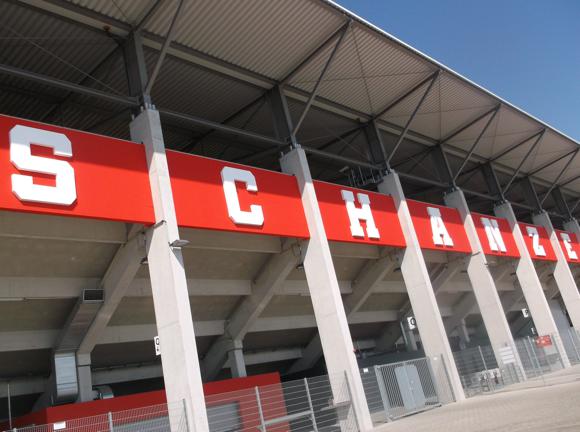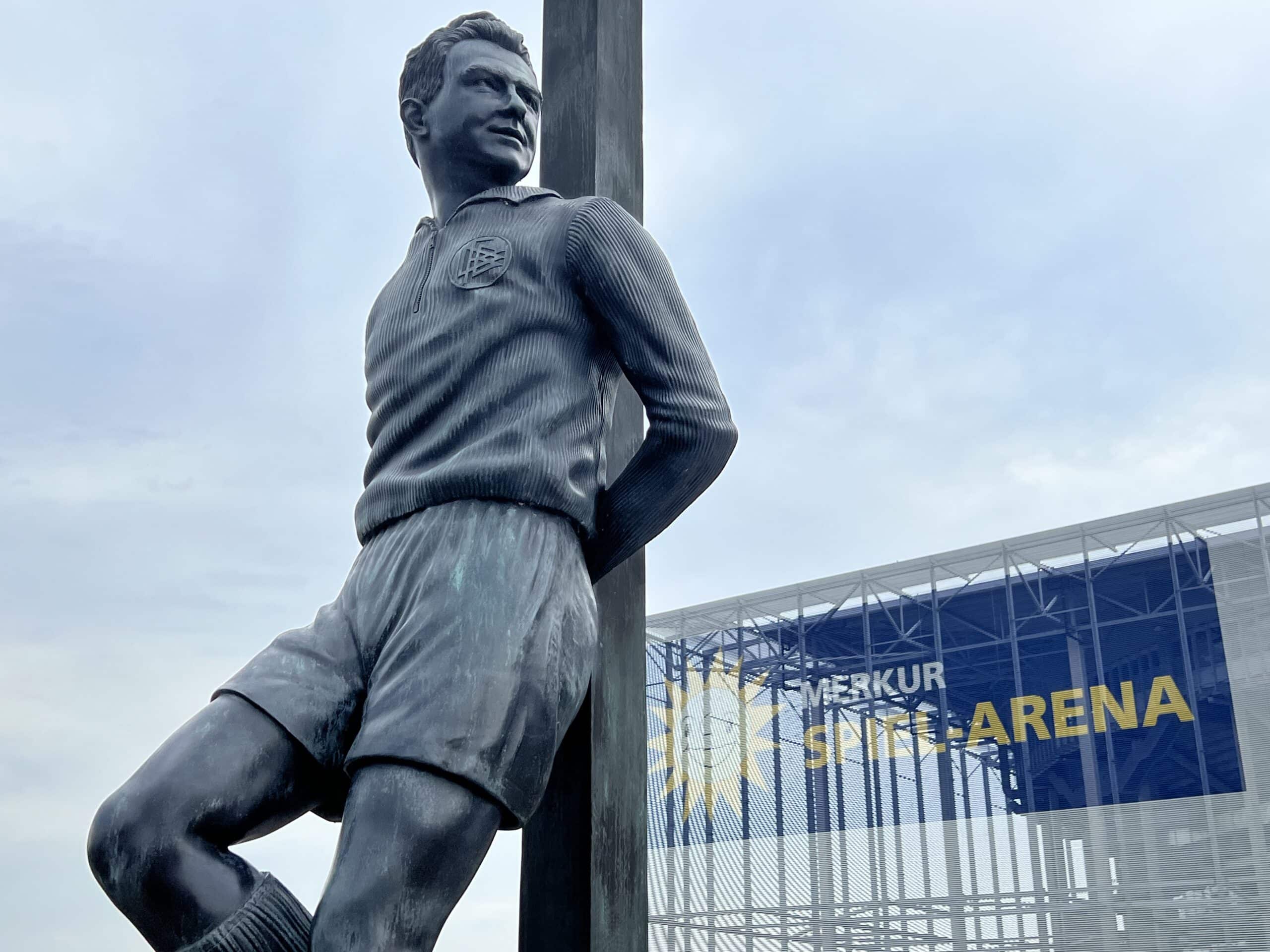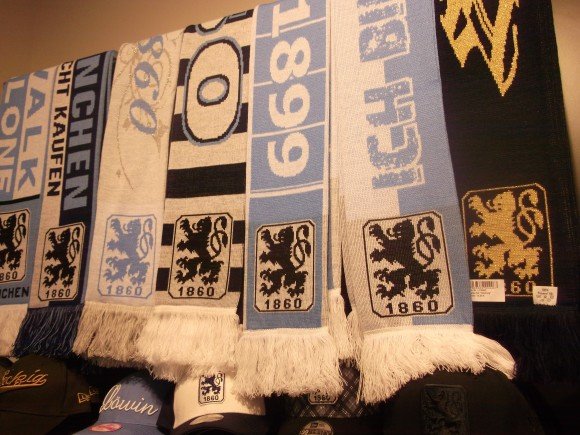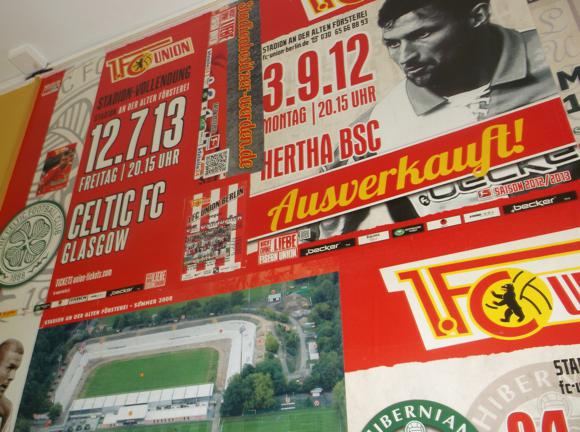A fan’s guide – the club from early doors to today
In November 2024, Borussia Mönchengladbach celebrated 125 years as a club but of equal significance was the fact that the 2024-25 campaign represented the 17th in a row among Germany’s elite.
Forever linked to the fast, young side that won five titles and made five European finals half a century ago, Borussia earned the nickname of die Fohlen. The Foals went lame in the early 2000s but have since bounced back to compete three times in the Champions League since 2016.
Formed as FC Borussia in the district of Eicken in 1900, the club acquired sandy patch of land before World War I. The future Bökelberg was built in 1919.
Borussia were a mid-range power in the region, enjoying occasional victories over local rivals Köln. One came in 1960, a cup run that led to Borussia taking the trophy. The winning goal came from striker Albert Brülls, later to play in two World Cups.

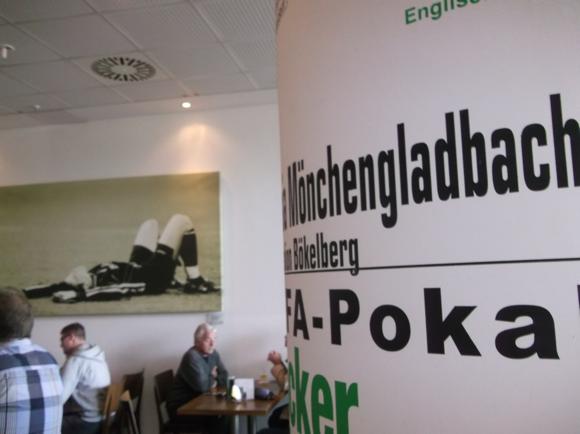






Soon afterwards, coach Hennes Weisweiler arrived from Köln. Discovering a young Günter Netzer and Jupp Heynckes, the savvy Weisweiler built a swift, attack-minded side who won the Zweite then, with Berti Vogts and Herbert Wimmer, held their own in the Bundesliga. With spectacular goals from Danish international Ulrik Le Fevre, Weisweiler’s young Foals won the league in 1970.
After losing a penalty shoot-out to Everton in the subsequent European Cup, and with Rainer Bonhof coming through, Borussia won another title in 1971.
The most memorable night at the Bökelberg came that October, and the 7-1 thrashing of Internazionale. The match was later annulled after Roberto Boninsegna was allegedly hit by a Coke can thrown from the crowd.
Weisweiler found more talent in slight striker Allan Simonsen, who starred in the successful run to win the UEFA Cup in 1975, the culmination of Weisweiler’s 11-year tenure. By then, Netzer had left for Real Madrid, his own farewell the winning goal in the 1973 Cup Final.








With Uli Stielike as the defensive midfielder, a more complete Borussia won three consecutive titles from 1975 to 1977 but again had little luck in the European Cup, losing on away goals to Real Madrid and the final to Liverpool a year later. This was one of several crucial games with the Reds that established a long-lasting supporter friendship.
The UEFA Cup win of 1979 ended a memorable decade. The following one had its highlights – the cup final of 1984, lost on a missed penalty by Borussia star Lothar Matthäus soon to join his Bayern opponents – but Mönchengladbach were in debt and in decline.
Relegation and slow subsequent recovery coincided with the opening of the Borussia- Park in 2004. Promoted in 2008, die Fohlen enjoyed an excellent 2011-12. Under coach Lucien Favre, young keeper Marc André ter Stegen and striker Marco Reus helped gain a Champions League qualifying spot. Despite defeat to Dinamo Kyiv and the departure of Reus to Dortmund, Mönchengladbach rediscovered their mojo and sought more European action.
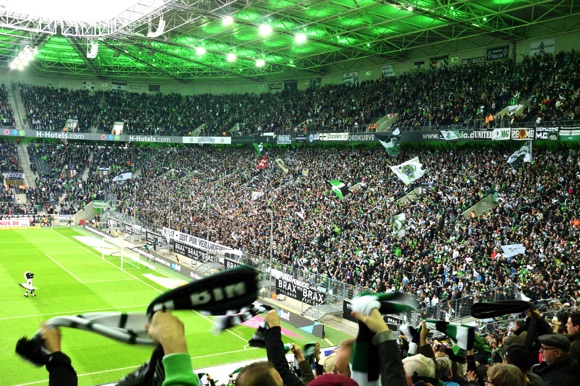
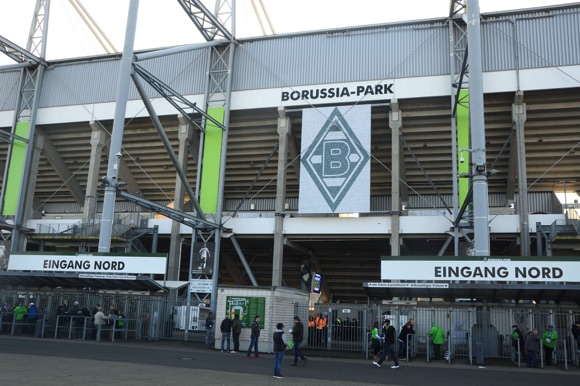

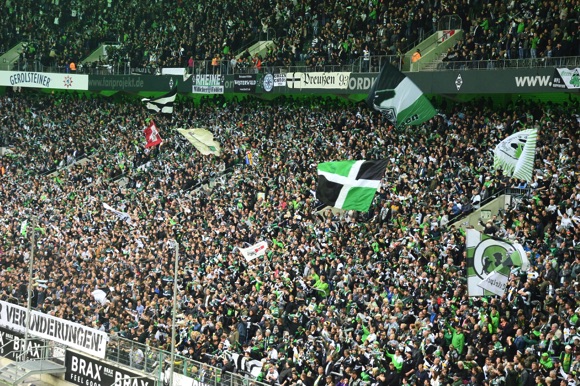
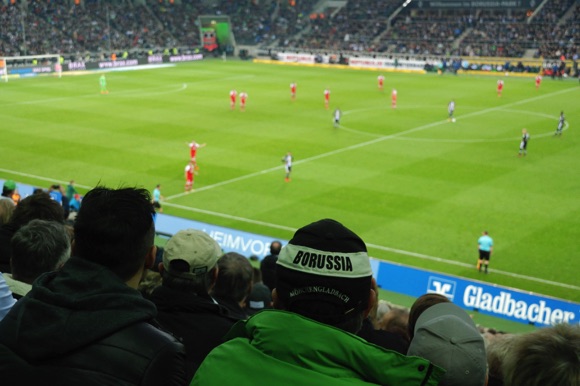


They took a major step in 2014-15 with a third-place finish in the Bundesliga and a return to Europe’s premier competition for the first time in some three decades. After a poor start that spelled the end of the transformational period under Favre, Mönchengladbach gave as good as they got in a tricky Champions League group, leading Manchester City in the final game at the Etihad until a late rally by the moneyed hosts.
Favre’s replacement, former reserve team coach André Schubert kept the Foals focused on further Champions League qualification, another tight tussle with City seeing two red cards at Borussia-Park. Dropping down to the Europa League, Borussia achieved a famous victory at Fiorentina thanks to a swift hat-trick from recently nominated team captain Lars Stindl, soon to claim the only goal in Germany’s Confederations Cup win in Russia.
Borussia’s European run was stopped by local rivals Schalke in a furious clash of many yellow cards and a crucial away goal from the visitors from Gelsenkirchen. With Thorgan Hazard, younger brother of Eden, growing into an attacking midfield role alongside Stindl, Mönchengladbach maintained a steady presence at the business end of the Bundesliga, qualifying for the Europa League in 2019.








Hazard headed to Dortmund, to be replaced by Marcel Thuram, son of Lilian, just as acclaimed coach Marco Rose was brought over from Red Bull Salzburg. in a magical night at Borussia-Park, a stoppage-time goal from the soon-to-be French international saw off Roma but inexplicable home defeats to Austria’s Wolfsberg and Başakşehir of Istanbul prevented further progress in Europe’s lesser club tournament.
In the league, Mönchengladbach led the table for eight straight rounds – a first since the days of Netzer and Heynckes – but the pandemic break did Rose’s team few favours and Borussia had to settle for fourth place, edged out on goal difference by Leipzig.
Concentrating on Europe, the Foals performed miracles to qualify from a tough Champions League group featuring Real Madrid and Internazionale, epic games with both sadly played behind closed doors at Borussia-Park. Reaching the knock-out stage of the premier club competition for the first time, Mönchengladbach again came up against Manchester City, this time both games played out in lockdown conditions in neutral Budapest.
With Rose lured to Dortmund, Borussia struggled to find their feet, particularly after the sale of Thuram to Inter and return of stalwart Stindl to his boyhood club of Karlsruhe. Despite the promise of French youth international midfielder Manu Koné, the Foals laboured in mid-table, tempered by the arrival of former Swiss international Gerardo Seoane as coach and German international Tim Kleindienst as striker.








Stadium Guide
The field of dreams – and the story behind it








Opened in 2004, Borussia-Park replaced the legendary Bökelberg, which had served die Fohlen for 85 years.
Borussia had bought a sandy plot in Eicken in March 1914. Nicknamed the ‘de Kull’, the Gravel Pit, the ground was opened in September 1919 as the Westdeutsche Stadion.
Later named the Bökelberg, the arena saw several improvements as Borussia gained success in the 1960s, with a roofed main stand and a vociferous standing Nordkurve among a capacity of 34,500.
This proved too small for Borussia’s biggest matches, played in Düsseldorf or Cologne. Residential displeasure scuppered any plans for expansion. Talk turned to a new arena.




It was general manager Rolf Rüssmann who instigated plans to transform a former British military barracks into what would become Borussia Park.
Taking two years and costing €87 million to build, Borussia Park was opened in July 2004. It retained a Nordkurve terrace, part of nearly 19,000 standing places within a capacity of 54,000. For international matches, such as the nine already staged, this is reduced to an all-seated 46,000. Overlooked for the 2006 World Cup, Borussia-Park hosted three games for the 2011 Women’s World Cup, the match between hosts Germany and France played before a full house.
With home fans in the Nordkurve and away ones allocated seated and standing places in sectors 6 and 7 of the Südkurve, Borussia-Park features one of Germany’s biggest stadium bars in the Westtribüne, where you also find the club museum and H-Hotel.
Beyond are training pitches and, on Hennes-Weisweiler-Allee, a display of fan name plaques, each in the famous diamond shape of the club badge.
getting here
Going to the stadium – tips and timings




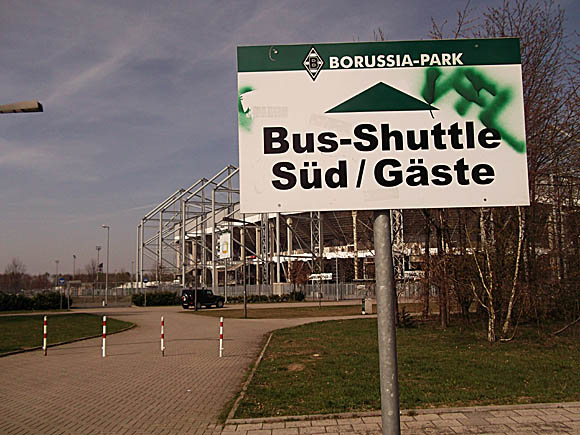



On match days, from Europaplatz outside Mönchengladbach station, a special service of bus line 017 runs to the stadium, journey time 15mins. Alternatively, on Platz der Republik on the other side of the station, shuttle buses run every 5mins, from 3hrs before kick-off to 2hrs afterwards.
More shuttle buses leave from Mittlestraße outside Rheydt station every 5mins from 3hrs before kick-off.
Public transport is free for ticket holders across the VRR network.
On non-match days, bus 017 (every 20mins) takes just over 20mins to reach the Borussia-Park stop from the station, or bus 014 from Rheydt station also goes via Borussia-Park to the town centre.
getting in
Buying tickets – when, where, how and how much



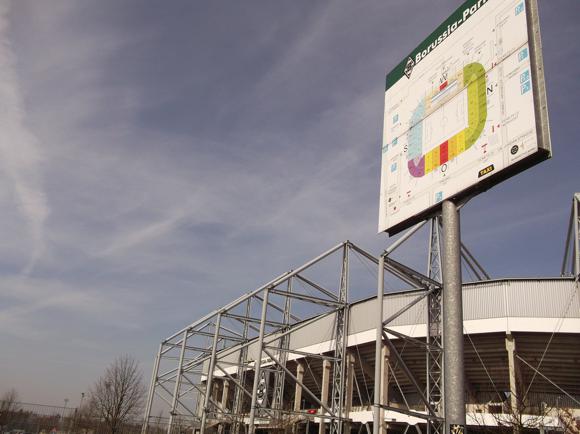
Tickets are purchased online for all the season’s home games. The visits of Bayern, Dortmund, Köln, Wolfsburg and Frankfurt are open to club members only, a free service requiring registration (German-only).
Several weeks in advance, you should be able to find seats in the Südtribüne and Osttribüne, perhaps in the upper Oberrang of the home Nordkurve.
Tickets are also sold in person at the FohlenShop (Mon-Sat 10am-6pm & match days for up to 1hr after the final whistle) in the Westtribüne at the stadium – but not at the one in town.
For information, contact info@borussia.de or call +49 1806 1819 00 (€0.20).
The most expensive seats are the Zentral ones (€45-€50) in the West- or Osttribüne over the halfway line, with those nearer the goals at €35. The upper tier at each end costs around €30, including the away sector 7 in the south-east corner. Away standing is €16 in sector 6. A supplement is added for bigger matches.
what to buy
Shirts, kits, merchandise and gifts







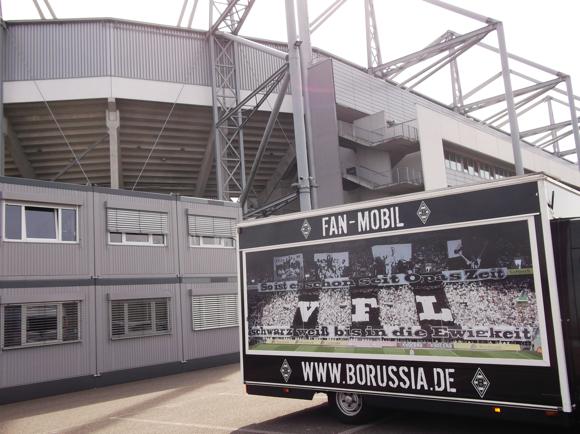




The club has two outlets, one in town at the Minto mall (Mon-Sat 10am-8pm) on Hindenburgstraße near the station, the other the FohlenShop (Mon-Sat 10am-6pm & match days for up to 1hr after the final whistle) behind the Westtribüne at the stadium.
The current version of Borussia’s home shirt is two green stripes where braces would go, on a white background with thin black tramlines on the outside.
Change strip is all green with darker green patterns across the torso, black cuffs and a half V-neck collar. Third choice is all black with thin white stripes around the collar and cuffs.
Other merch includes coffee cups covered in the team’s autographs, Christmas baubles bearing the B diamond logo and stylish dressing gowns in black and green.
You’ll also find an illustrated retrospective of the Borussia shirt, Das Gladbach Trikot, and an updated version of the club history, Die Chronik, 1900-2021.
Stadium tours
Explore the ground inside and out










The extensive club museum in FohlenWelt (€12, reduced €7-€10, combined tickets with stadium tour available, see below; Thur 2pm-8pm, Fri-Sat 10am-6pm, Sun/hols 10am-4pm, match days from 10am-30mins before kick-off, evening games until 9pm, school hols also Mon-Wed 10am-6pm) behind the Westtribüne is divided into nine chronological areas and 18 themed zones.
Along with all the glittering trophies, curios include the Coke can that cancelled the famous 7-1 win over Inter in 1971, and the broken goalpost from the Bökelberg that same year, forcing the league game with Bremen to be abandoned that same year.
Book for the day you wish to come online. Audio guides also come in English and Dutch versions and feature famous voices from Borussia’s history, including Rainer Bonhof.
FohlenTours (€10, reduced €6-€9; +museum €18, reduced €10-€15) are offered on the same days, usually at 3pm and 5pm, with 11am slots scheduled at weekends – book online. They take in the players’ tunnel, VIP areas and Nordkurve.
Where to Drink
Pre-match beers for fans and casual visitors







In the Westtribüne, Die FohlenSportsBar gives itself over to VIPs on match days (after 11am) but otherwise welcomes guests from (very) early doors every other day of the week as this forms part of the H4 stadium hotel. TVs hang over a ceiling depicting Borussia history in black and white, ideal on Borussia away days when popular expert and Foals fan Frank Schiffers provides his own live commentary.
Once guests have tucked into breakfast, the kitchen stays open until 9pm Mon-Sat, 3pm Sun. Note the Borussia-burger (with Black Angus beef) and Borussia-Park Currywurst among the Stadion Feeling selection on the menu.
Along with local Bolten Altbier, the draught beer is Bitburger, which sponsors the match-day Biergarten alongside, serving from 4hrs before kick-off and screening the post-match press conference after the game.
The FanHaus (Mon 10am-6pm, home games 4hrs before & after match) is across main Gladbacher Straße, through greenery on Dahlener Heide. Gallons of Diebels Alt and Jever are sunk in this large beerhall, the former Ayrshire barracks now with Borussia scarves lined along the ceiling.














